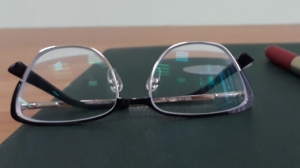Common priorities in science to contribute to knowledge-based economy in Belarus

MINSK, 7 May (BelTA) – Outlining the common priority areas in scientific, technological and innovative activities in Belarus for 2021-2025 will help build the knowledge economy and will encourage scientists, engineers, designers and business to implement joint high-performance projects, Chairman of the State Committee on Science and Technology Aleksandr Shumilin told BelTA while commenting on Decree No.156.
The document envisages further development of information, medical, biological, mechanical engineering, and agro-industrial technologies, power industry, construction, rational use of natural resources, security of individuals and society. “Identifying these priorities will help us build a knowledge economy and encourage scientists, engineers, designers and business to jointly implement high-performance projects. New programs and strategies at all levels will focus on the development of production facilities based on technologies of the V and VI paradigms, with high science intensity and low energy and material intensity. This will help preserve and increase the competitiveness of knowledge-intensive and high-tech sectors of the national economy, ensure the growth of the scientific and technical potential, and preserve and develop scientific schools,” Aleksandr Shumilin said.
In his words, Belarus' priorities in 2021-2025 are aligned with science and technology development areas in the EU, the United States and the Eurasian Economic Union. “Their number has been significantly reduced if compared to he current period. This will help us concentrate resources on the most important economic projects,” said Aleksandr Shumilin.
The priorities provide for a unified system to coordinate research and development and innovation projects through the implementation of the full cycle of scientific activities. “They are aimed at ensuring that Belarus achieves the level of innovative development of the leading countries in the Eastern Europe region through the implementation of the intellectual potential of the Belarusian nation,” said Aleksandr Shumilin.
The development of priorities was preceded by enormous and time-consuming work by scientists and manufacturers. This work was based on a comprehensive forecast of the scientific and technological progress of Belarus for 2021-2025 and for the period up to 2040, sectoral and regional development plans and strategies. Opinions of business and the scientific community were also taken into account, including those of 12 government councils for scientific and technical expertise.













